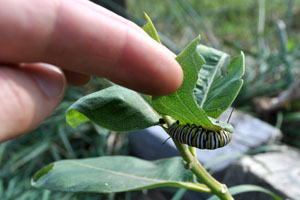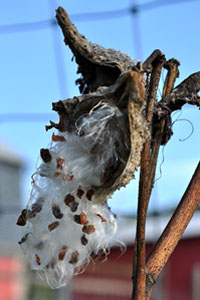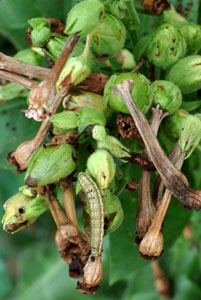Posted by · Leave a Comment
Cycles of all sorts…

Monarch caterpillar on milkweed (host plant)

Milkweed plant “going to seed”
I plant tobacco. I love it. It reminds me of growing up and taking family trips down I-95, seeing fields and fields and fields of this majestic plant with gigantic leaves. I’ve rarely seen insects on or around our tobacco plants; the leaves are sticky. And although I find the scent appealing, I imagine in the bug world there might be something off-putting about it. So, I usually don’t bother to check the plants for pests.

Tobacco Budworm
That all changed a few days ago, when I noticed these worms on the tobacco. I assumed they were corn earworms—after all, they looked like them and were less than a foot from the overhanging corn leaves. Maybe they just dropped onto the tobacco from the corn leaves?
Wrong. I was amazed to find I have tobacco budworms.
A very close relative of the corn earworm, the tobacco budworm attacks field crops—tobacco, soybeans, cotton (which, by the way, is planted at the end of the tobacco row). A common predator is the wasp. Host plants include beardstem, lupine, and sunflower to name a few—all of which are present at our place (including the wasps!).
Just goes to show: there are so many “mini-lifecycles” going on every day all around us…if we just take a moment to notice—like those pictured here.


